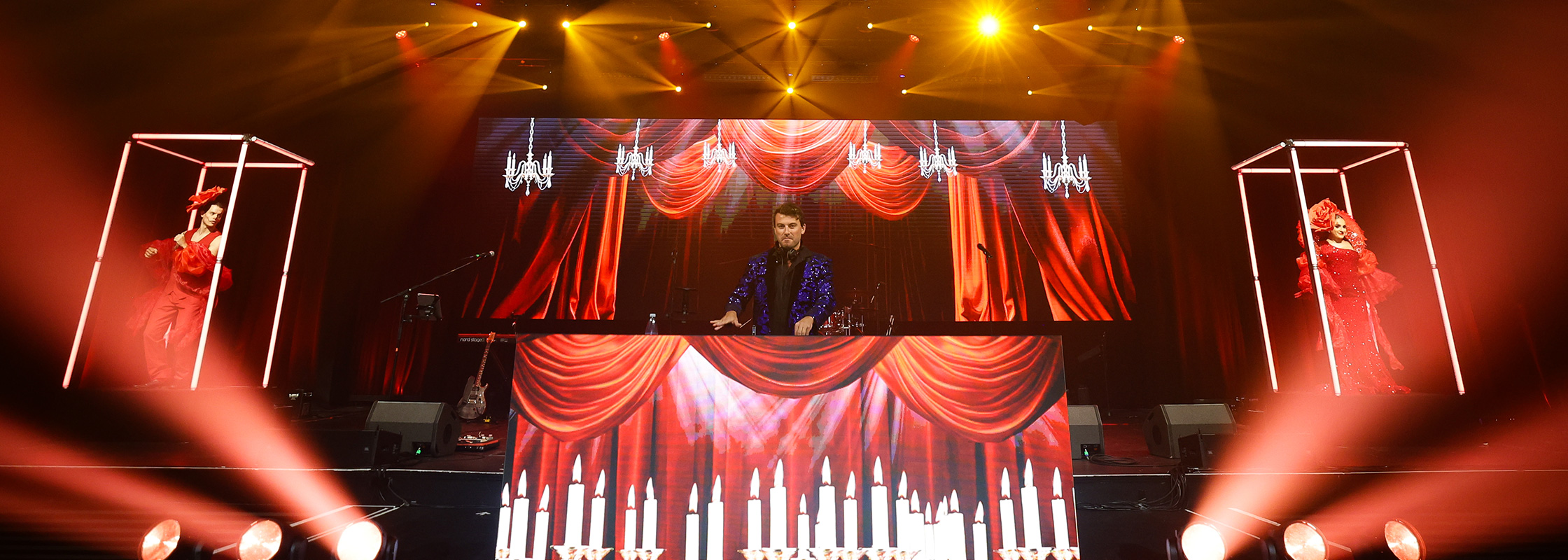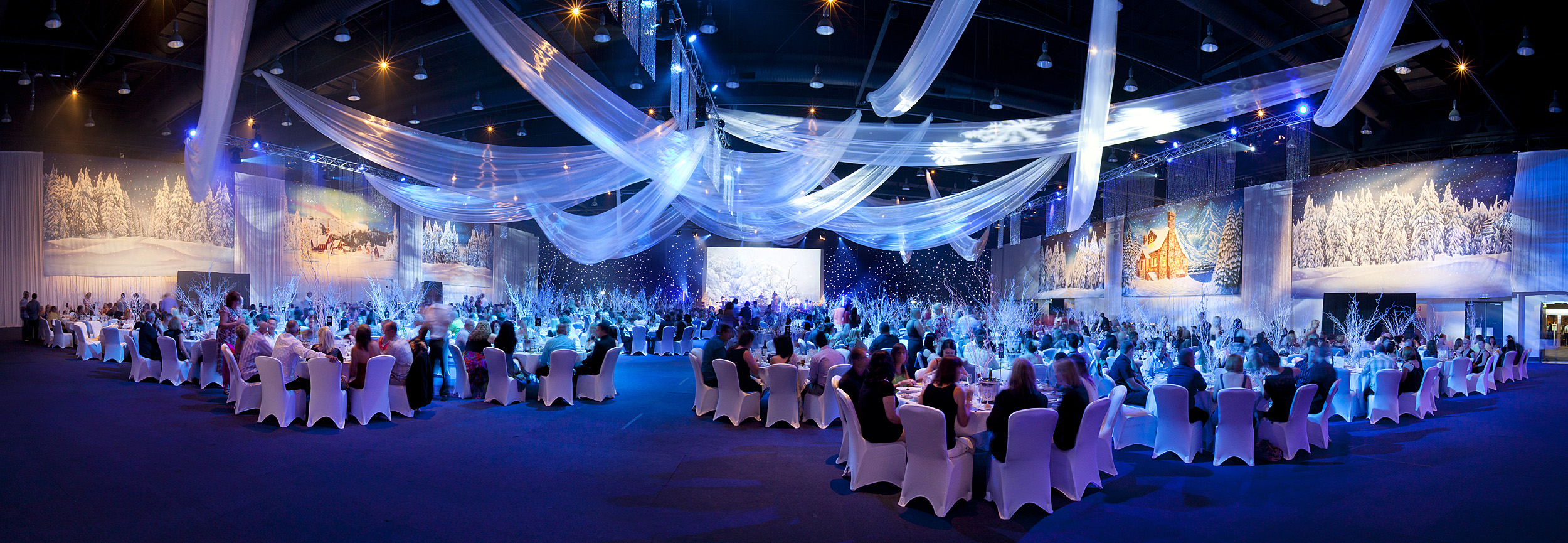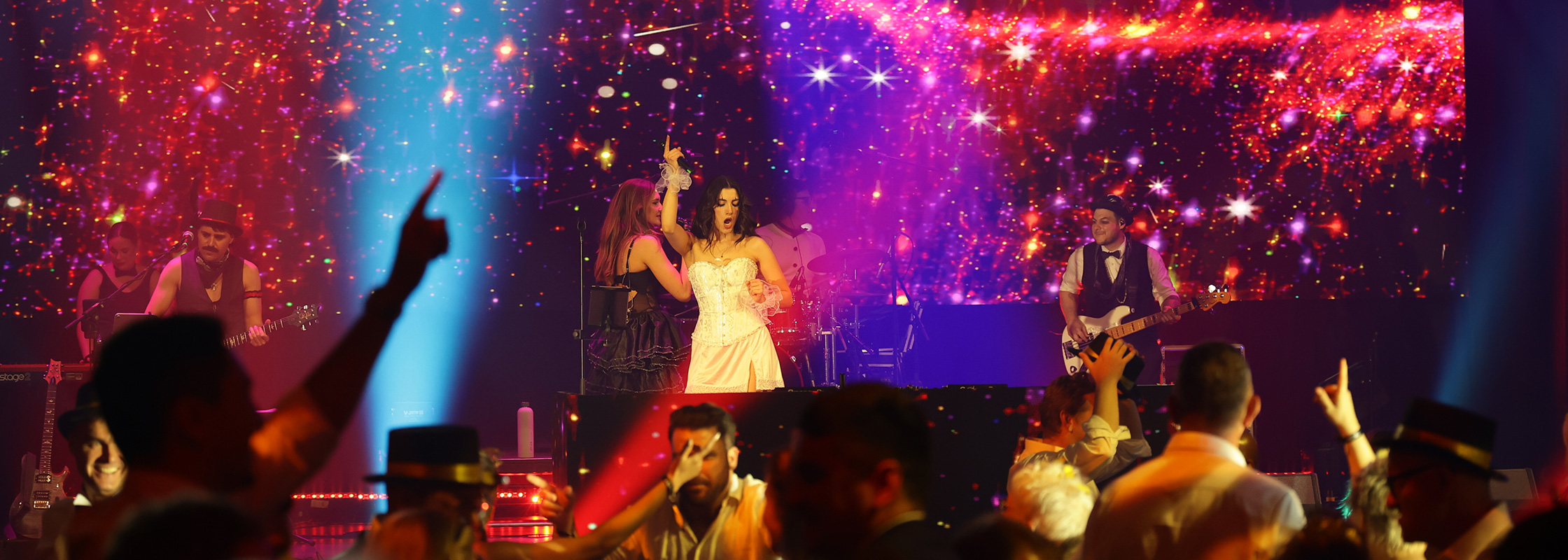Related Posts
Tags

Before we delve into what Extended Reality can do and it’s impact for events, we firstly need to explain “What is Extended Reality”?
Extended Reality is the umbrella term for an environment that blends the physical and virtual world together combining Augmented Reality, Mixed Reality and Virtual Reality. Extended reality has many applications for enhanced consumer experiences and the Immersive XR Stage is just one example of how it’s changing the corporate event landscape.
The entry level solution uses a green screen and streams or films presenters in front of it, then superimposing the virtual world around them. The next level is achieved via a LED screen with the additional option of an LED floor to create a full XR environment.
The secret sauce is the real-time editing software which creates a 3D environment to put the person into the set, rather than a 2D image behind. A tracked camera in front of the presenter and the LED screen is linked to a virtual camera which places the AR elements behind the presenter. So when the presenter moves, the projected set moves with the presenter and the 3D scene. This means that presenters can walk round, refer to items or screens on stage and the lights can change in real time and behaves like the real environment.
 The types of content which can be integrated into the virtual environment are almost limitless. Animated content enables producers to create virtual cars, animals, backgrounds from anywhere in the world, change the stage design and more. The technique is ideal for presenting research findings, financial results, analytics and graphs and these can appear as engaging, moving, interactive elements on the stage with the presenter. The end product is an environment that enables you to pull anything onto the stage without them having to physically be there.
The types of content which can be integrated into the virtual environment are almost limitless. Animated content enables producers to create virtual cars, animals, backgrounds from anywhere in the world, change the stage design and more. The technique is ideal for presenting research findings, financial results, analytics and graphs and these can appear as engaging, moving, interactive elements on the stage with the presenter. The end product is an environment that enables you to pull anything onto the stage without them having to physically be there.
You can also take a real time source of two or more different presenters and bring them together for a group conversation/interview, just like a panel discussion, but in one room with presenters from different locations. The presenters have the opportunity to see what they look like in the virtual environment, so when gesturing to screen content, animated 3D analytics or animations as they appear.
 The technology is still new and emerging. The really exciting part of the solution is that you can create something completely different to what anyone has produced before.
The technology is still new and emerging. The really exciting part of the solution is that you can create something completely different to what anyone has produced before.





Here are some of our favourite examples of the technology applied:
Annual General Meeting
The Immersive XR Stage is perfect to enable all board members to participate in the Annual General Meeting virtually during times of physical restrictions and geographies. Limited numbers of Board members can be physically on the stage, with appropriate distancing, whilst others can appear either from other XR Stages, or live stream to an screen which is part of the virtual stage set.
Each finding of the business or financial outcome can be reported and appear as animated graphics as the Managing Director shares each one with shareholders. Viewers can be taken on a journey to the location the company does business such as a mine and be shown exactly how and where the work is done.
 Awards Nights
Awards Nights
To maintain excitement and energy levels, which can be a challenge during virtual awards nights and galas, the Immersive XR Stage can provide the perfect solution. For the stage look, we can design a dramatic presentation stage can be designed with the presenter superimposed with two large screens above them to announce the finalists. As winner’s name is called out, theatrical lighting effects commence and the winners name can appear as animation on a central screen.
 Because this is a 3D space, the presenter can be filmed announcing the winner and then the camera turn 360 to where the entertainment is positioned in the studio for their performance, but it appears like they’re at a totally separate stage. Acceptance speeches can be streamed live and cut to a screen on stage to be part of a cohesive experience for viewers.
Because this is a 3D space, the presenter can be filmed announcing the winner and then the camera turn 360 to where the entertainment is positioned in the studio for their performance, but it appears like they’re at a totally separate stage. Acceptance speeches can be streamed live and cut to a screen on stage to be part of a cohesive experience for viewers.
Large scale conferences
A big part of conferences is conversations on topics of interest, or presentations of new products or services. Again an impressive stage set can be designed for a virtual conference for the live presenter, other experts or keynotes can appear from different studios as though they’re onstage or elsewhere, or on a giant screen on the set. Giant animations of the product, or device being discussed can be shown on the stage and deconstruct to show the inner workings.
 What’s next for virtual events…?
What’s next for virtual events…?
As virtual and hybrid events become increasingly part of our new norm, extended reality gives us a new opportunity to wow and engage our audiences. According to Forbes, the market for Extended Reality is tipped to grow to $200 billion USD in the next 2 years. So it appears that the technology is here to stay and is growing. The challenge will be to stretch our imagination to use the solution in new and different ways.




Comments